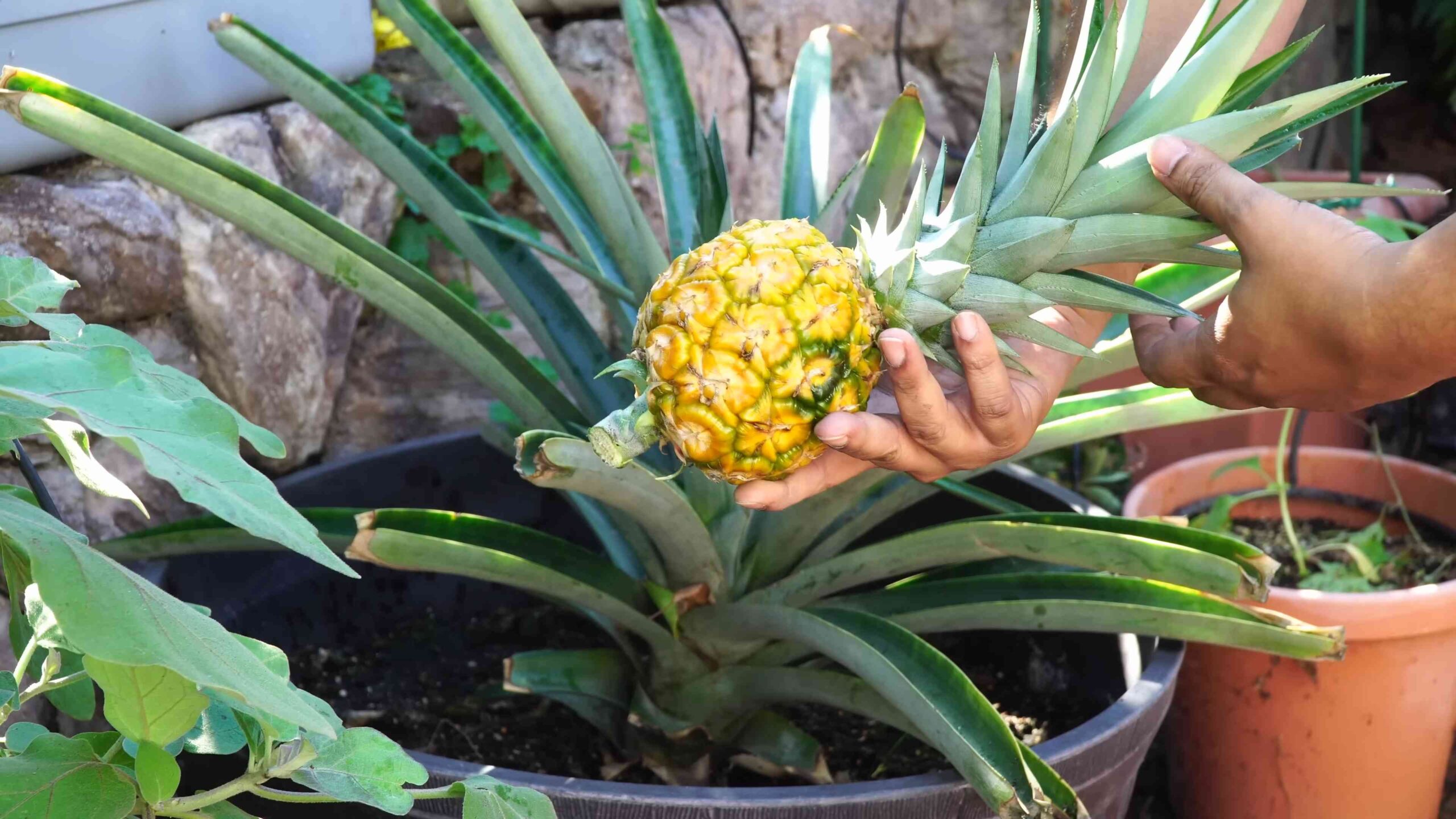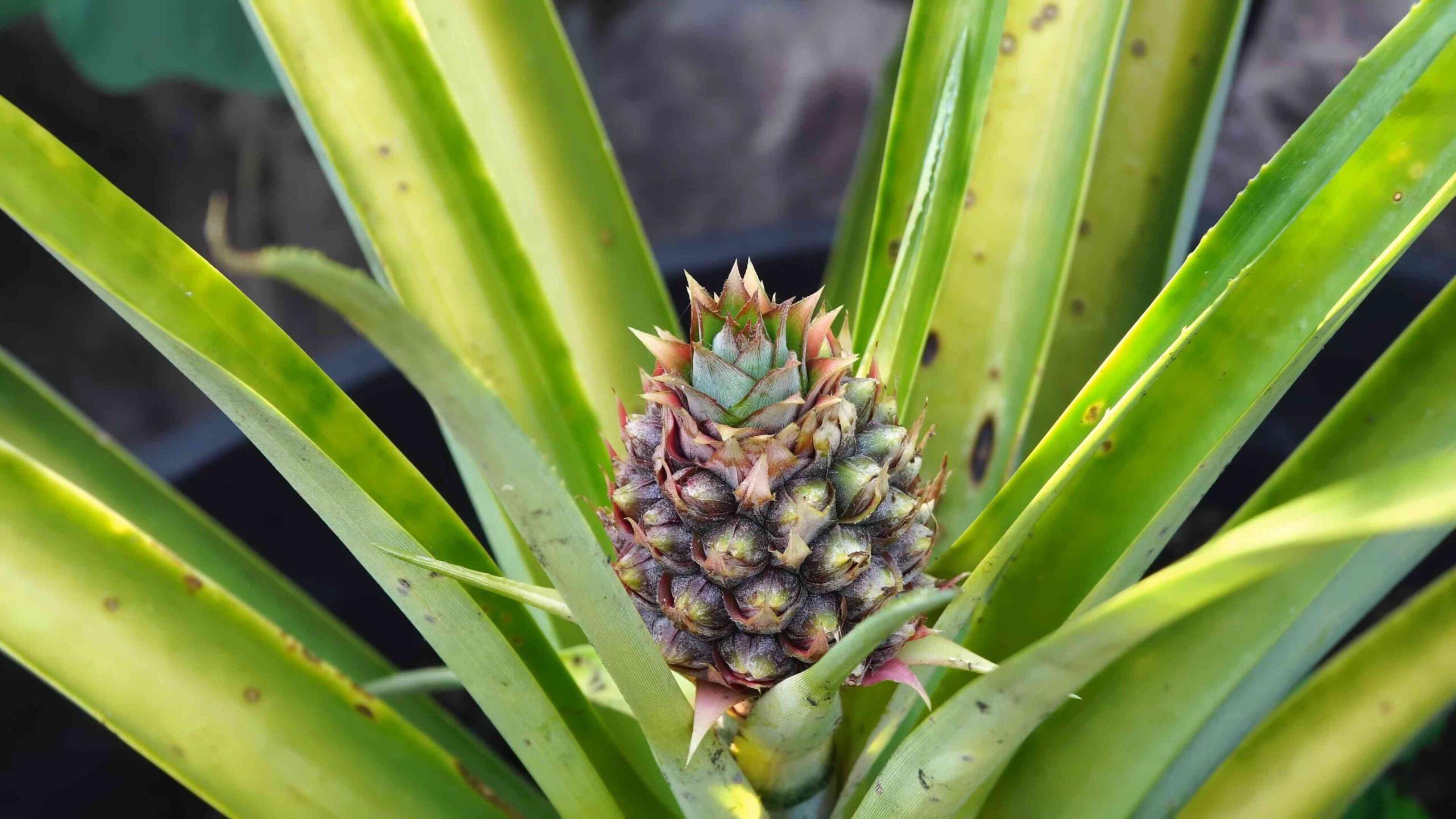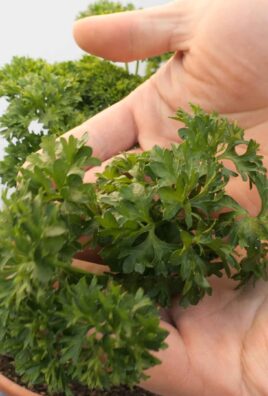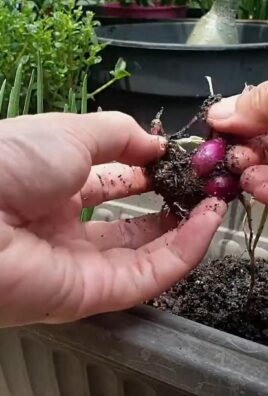Growing pineapples in containers might sound like an exotic dream reserved for tropical climates, but I’m here to tell you it’s totally achievable, even if you’re miles away from Hawaii! Forget those expensive grocery store pineapples – imagine plucking a sweet, juicy pineapple straight from your own patio.
The pineapple, a symbol of hospitality and welcome, has a rich history, gracing the tables of royalty and becoming a coveted delicacy. Originally native to South America, its journey around the world is a testament to its deliciousness and appeal. Now, you can be a part of that story, cultivating your own piece of tropical paradise.
Why should you try this DIY trick? Well, for starters, it’s incredibly rewarding! There’s something magical about nurturing a plant from a simple pineapple top to a fruit-bearing beauty. Plus, growing pineapples in containers is a fantastic way to add a touch of the tropics to your home, regardless of your garden size. It’s also a sustainable way to enjoy fresh fruit, reducing your carbon footprint and knowing exactly where your food comes from. I’m excited to share my simple, step-by-step guide to help you embark on this exciting gardening adventure. Let’s get started!

Growing Pineapples in Containers: A Tropical Treat at Home!
Hey there, fellow plant enthusiasts! Ever dreamt of harvesting your own juicy pineapple without living in a tropical paradise? Well, dream no more! I’m going to walk you through the surprisingly simple process of growing pineapples in containers, right in your own backyard (or even indoors!). It’s a rewarding experience, and trust me, that homegrown pineapple tastes *amazing*.
Choosing Your Pineapple Top
The first step to pineapple success is selecting the right starting material. You won’t be needing seeds for this project; we’re going to use the top of a store-bought pineapple!
* Look for a Healthy Pineapple: Choose a ripe pineapple with vibrant green leaves. Avoid pineapples with brown, wilted, or damaged leaves. The fruit itself should be fragrant and slightly soft to the touch.
* Check the Crown: The crown (the leafy top) should be firmly attached to the fruit. Gently tug on a few leaves; they shouldn’t come off easily.
* Organic is Best: While not essential, an organic pineapple is preferable. Non-organic pineapples may have been treated with growth inhibitors, which can hinder rooting.
Preparing the Pineapple Top for Planting
Okay, you’ve got your pineapple. Now, let’s get that top ready to become a thriving plant!
1. Twist and Remove: Hold the pineapple fruit firmly in one hand and the crown in the other. Twist the crown firmly until it separates from the fruit. Don’t worry if some fruit flesh comes along with it.
2. Remove the Bottom Leaves: This is crucial! Carefully peel off the bottom few layers of leaves from the base of the crown. You’ll want to expose about an inch or two of the stem. This exposed stem is where the roots will emerge.
3. Clean the Stem: If there’s any remaining fruit flesh attached to the stem, carefully scrape it off with a knife. This prevents rotting, which can kill your pineapple before it even gets started.
4. Let it Callus: This is an important step that many people skip! Place the prepared pineapple top in a cool, dry place for about a week. This allows the cut end to callus over, which helps prevent rot when you plant it. I usually just leave mine on a paper towel on the kitchen counter.
Rooting the Pineapple Top
There are two main methods for rooting your pineapple top: in water or directly in soil. I’ve had success with both, but I personally prefer rooting in water because you can actually *see* the roots developing.
Rooting in Water (My Preferred Method)
1. Choose a Container: Select a clear glass or jar that’s wide enough to hold the pineapple top without it tipping over.
2. Add Water: Fill the container with enough water to cover the exposed stem, but *not* the base of the leaves. You want the stem to be submerged, but the leaves should be above the water line.
3. Secure the Top (Optional): If your pineapple top is a bit wobbly, you can use toothpicks inserted around the base to help stabilize it in the jar.
4. Find a Sunny Spot: Place the container in a warm, sunny location. A windowsill is ideal.
5. Change the Water Regularly: Refresh the water every few days to prevent algae growth and keep the water clean.
6. Be Patient: Rooting can take several weeks, sometimes even a month or two. Don’t get discouraged if you don’t see roots right away. Just keep the water fresh and the pineapple top in a sunny spot. You’ll eventually see small roots emerging from the stem.
7. Wait for Root Development: Allow the roots to grow to about 2-3 inches long before transplanting to soil.
Rooting Directly in Soil
1. Prepare the Pot: Choose a small pot (about 6 inches in diameter) with drainage holes. Fill it with a well-draining potting mix. A mix of potting soil, perlite, and sand works well.
2. Plant the Top: Make a hole in the center of the soil and carefully plant the pineapple top, burying the exposed stem.
3. Water Gently: Water the soil gently until it’s moist but not soggy.
4. Provide Support (Optional): You may need to use small stakes to support the pineapple top until it develops roots.
5. Place in a Sunny Spot: Place the pot in a warm, sunny location.
6. Keep the Soil Moist: Keep the soil consistently moist, but avoid overwatering.
7. Be Patient: Rooting in soil can also take several weeks. You’ll know the pineapple top has rooted when you see new growth.
Planting Your Rooted Pineapple Top
Once your pineapple top has developed a good root system (either in water or directly in soil), it’s time to transplant it to a larger container.
1. Choose a Container: Select a pot that’s at least 10-12 inches in diameter. Pineapples need room for their roots to grow. Make sure the pot has good drainage holes.
2. Prepare the Potting Mix: Pineapples thrive in well-draining, slightly acidic soil. A mix of potting soil, perlite, and peat moss is a good option. You can also add some compost for extra nutrients.
3. Transplant Carefully: Gently remove the pineapple top from its rooting container. If you rooted in water, carefully untangle the roots. If you rooted in soil, gently loosen the soil around the roots.
4. Plant the Pineapple: Make a hole in the center of the potting mix and carefully plant the pineapple top, making sure the roots are well covered.
5. Water Thoroughly: Water the soil thoroughly until water drains out of the drainage holes.
6. Mulch (Optional): You can add a layer of mulch around the base of the plant to help retain moisture and suppress weeds.
Caring for Your Pineapple Plant
Now that your pineapple is planted, it’s time to provide the care it needs to thrive.
* Sunlight: Pineapples need plenty of sunlight, at least 6-8 hours per day. Place your container in a sunny location, such as a south-facing window or a sunny patio. If you live in a climate with harsh summers, you may need to provide some afternoon shade to prevent the leaves from scorching.
* Watering: Water your pineapple plant regularly, especially during the growing season (spring and summer). Allow the soil to dry out slightly between waterings. Avoid overwatering, as this can lead to root rot. I usually water mine when the top inch of soil feels dry to the touch.
* Fertilizing: Pineapples are heavy feeders, so regular fertilization is important. Use a balanced fertilizer (such as 10-10-10) every 2-3 months during the growing season. You can also use a liquid fertilizer every few weeks. Follow the instructions on the fertilizer label.
* Temperature: Pineapples prefer warm temperatures, between 65°F and 85°F (18°C and 29°C). They can tolerate temperatures as low as 50°F (10°C) for short periods, but they are sensitive to frost. If you live in a climate with cold winters, you’ll need to bring your pineapple plant indoors.
* Humidity: Pineapples appreciate high humidity. If you live in a dry climate, you can increase the humidity around your plant by misting it regularly or placing it on a pebble tray filled with water.
* Pest Control: Pineapples are relatively pest-resistant, but they can occasionally be affected by mealybugs or scale. Inspect your plant regularly for pests and treat them promptly with insecticidal soap or neem oil.
* Repotting: As your pineapple plant grows, it may need to be repotted into a larger container. Repot it every year or two, or when the roots start to outgrow the pot.
Encouraging Your Pineapple to Fruit
This is where things get interesting! Pineapples don’t always fruit readily in containers, but there are a few tricks you can use to encourage them to produce a delicious fruit.
1. Maturity: First, be patient! It can take 2-3 years for a pineapple plant grown from a top to mature enough to fruit.
2. Ethylene Gas: The key to inducing flowering is ethylene gas. You can create ethylene gas by placing a ripe apple or banana near the plant, covering both with a plastic bag for a few days. The ripening fruit will release ethylene gas, which can trigger flowering.
3. Calcium Carbide: Another method is to use calcium carbide. Dissolve a small amount of calcium carbide (about 1/4 teaspoon) in a gallon of water. Pour about a cup of this solution into the center of the pineapple plant, where the leaves meet the stem

Conclusion
So, there you have it! Growing pineapples in containers isn’t just a whimsical gardening project; it’s a surprisingly achievable way to bring a taste of the tropics to your own backyard, balcony, or even sunny windowsill. We’ve walked through the process, from selecting the perfect pineapple top to nurturing your plant through its various stages.
Why is this DIY trick a must-try? Because it’s rewarding on so many levels. First, it’s incredibly satisfying to transform kitchen waste into a thriving plant. Second, it’s a fantastic learning experience, offering insights into plant propagation and the fascinating life cycle of a pineapple. Third, and perhaps most enticingly, you get the potential for homegrown, incredibly flavorful pineapples! Imagine the bragging rights when you serve a dessert featuring a pineapple you nurtured from start to finish.
But the benefits extend beyond the potential fruit. A pineapple plant is a beautiful and unique addition to any indoor or outdoor space. Its spiky, architectural form adds a touch of exotic flair, and it’s a conversation starter for sure. Plus, it’s a relatively low-maintenance plant once established, making it perfect for busy gardeners.
Don’t be afraid to experiment with variations! Try different types of potting mixes to see what works best in your climate. Consider using a self-watering container to simplify watering. You can also explore different pineapple varieties, although finding the specific variety at the grocery store can be a challenge. Look for pineapples with particularly vibrant green tops, as these tend to be the most vigorous.
Ready to embark on your pineapple-growing adventure? We wholeheartedly encourage you to give this DIY trick a try. It’s a fun, educational, and ultimately delicious project that will bring a touch of the tropics to your life. Remember to be patient, as it can take several years for a pineapple plant to produce fruit. But the journey is just as rewarding as the destination.
And most importantly, we want to hear about your experiences! Share your photos, tips, and challenges in the comments below. Let’s create a community of pineapple enthusiasts and learn from each other. Did you find a particularly effective fertilizer? Did you discover a secret to encouraging flowering? Your insights could help other aspiring pineapple growers achieve success. So, grab a pineapple, get your hands dirty, and start growing your own tropical paradise today! Successfully growing pineapples in containers is within your reach, and we can’t wait to see what you create.
Frequently Asked Questions (FAQ)
How long does it take for a pineapple plant to produce fruit?
Patience is key when growing pineapples! It typically takes between 2 to 3 years for a pineapple plant grown from a top to produce fruit. Several factors influence this timeframe, including the size of the initial pineapple top, the growing conditions (sunlight, temperature, watering), and the specific variety of pineapple. Don’t be discouraged if it takes longer; the wait will be worth it!
What kind of soil is best for growing pineapples in containers?
Pineapples thrive in well-draining, slightly acidic soil. A good potting mix for pineapples would be a blend of:
* 1/3 potting soil
* 1/3 perlite or coarse sand (for drainage)
* 1/3 peat moss or coco coir (for moisture retention and acidity)
Avoid using heavy clay soils, as they can lead to root rot. You can also purchase specialized potting mixes formulated for bromeliads, which are closely related to pineapples.
How much sunlight do pineapple plants need?
Pineapples are sun-loving plants and require at least 6 hours of direct sunlight per day to thrive. If you’re growing your pineapple indoors, place it near a south-facing window where it will receive the most sunlight. If you don’t have enough natural light, you can supplement with a grow light. When growing outdoors, choose a location that receives full sun throughout the day.
How often should I water my pineapple plant?
Water your pineapple plant thoroughly when the top inch of soil feels dry to the touch. Allow the excess water to drain out of the bottom of the container. Avoid overwatering, as this can lead to root rot. During the warmer months, you may need to water more frequently. In the winter, when the plant is not actively growing, you can reduce watering. It’s also beneficial to pour water into the central cup of the plant (where the leaves meet), as pineapples can absorb water through their leaves.
What kind of fertilizer should I use for my pineapple plant?
Pineapples are not heavy feeders, but they do benefit from regular fertilization. Use a balanced, water-soluble fertilizer (such as a 10-10-10 or 14-14-14) diluted to half strength. Fertilize every 2-3 months during the growing season (spring and summer). Avoid fertilizing during the winter months when the plant is dormant. You can also use a bromeliad fertilizer, which is specifically formulated for plants in the bromeliad family.
How do I encourage my pineapple plant to flower and fruit?
Getting a pineapple plant to flower can be tricky, but there are a few things you can try. One common method is to expose the plant to ethylene gas. You can do this by placing a ripe apple or banana inside a plastic bag with the plant for a few days. The ripening fruit will release ethylene gas, which can trigger flowering. Another method is to use a small amount of calcium carbide dissolved in water and pour it into the central cup of the plant. However, be very careful when handling calcium carbide, as it can be corrosive. Ensure the plant is mature enough (at least 2-3 years old) and receiving adequate sunlight and nutrients before attempting to induce flowering.
What are some common problems when growing pineapples in containers?
Some common problems include:
* **Root rot:** Caused by overwatering or poorly draining soil. Ensure your potting mix is well-draining and avoid letting the plant sit in standing water.
* **Mealybugs:** These small, white, cottony pests can infest the leaves and stems of pineapple plants. Treat with insecticidal soap or neem oil.
* **Scale:** These small, brown, shell-like insects can also infest pineapple plants. Treat with insecticidal soap or neem oil.
* **Lack of sunlight:** Insufficient sunlight can lead to stunted growth and a lack of flowering. Ensure your plant receives at least 6 hours of direct sunlight per day.
* **Cold temperatures:** Pineapples are sensitive to frost and freezing temperatures. Protect your plant from cold weather by bringing it indoors or covering it with a frost blanket.
Can I grow pineapples indoors year-round?
Yes, you can grow pineapples indoors year-round, provided you can provide the necessary growing conditions. This includes adequate sunlight (or supplemental grow lights), warm temperatures (ideally between 65-80°F), and proper watering and fertilization. Indoor-grown pineapples may take longer to fruit than those grown outdoors, but it is definitely possible.
What do I do with the pineapple after I harvest the fruit?
After harvesting the pineapple, the mother plant will eventually die. However, it will often produce “pups” or offsets at the base of the plant. These pups can be separated from the mother plant and potted up to grow new pineapple plants. This is a great way to continue your pineapple-growing journey!
Is growing pineapples in containers worth the effort?
Absolutely! While it requires patience and attention, growing pineapples in containers is a rewarding and unique gardening experience. The satisfaction of harvesting your own homegrown pineapple is unparalleled, and the plant itself adds a touch of tropical beauty to any space. Plus, it’s a great conversation starter and a fun way to learn about plant propagation. So, give it a try and see for yourself!





Leave a Comment